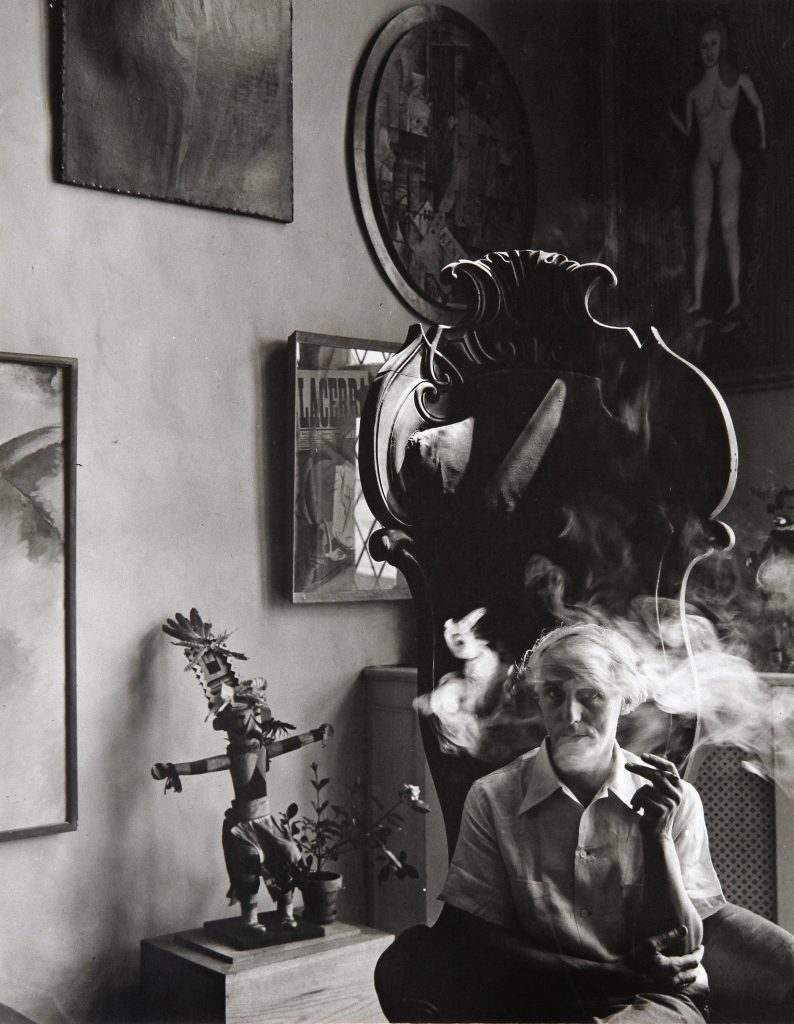The German artist, Max Ernst (1891-1976), was a major contributor to the theory and practice of Surrealism. Fleeing to New York with Peggy Guggenheim in 1941, to escape Nazi persecution, he entered into a short-lived marriage with her in the following year. The photographer Arnold Newman visited Ernst’s New York home that the artist shared with his new wife, gathering a number of their most treasured possessions into a corner. Ernst sat in front of them in a throne-like chair, creating clouds of cigarette smoke. When he was shown the resulting print, Ernst was delighted to discover the image of a bird in the smoke clouds, as it chimed with his then current activity of drawing birds, and so seemed to demonstrate the serendipitous and subconscious aspects of Surrealism.
Newman had come to the realisation that the environment in which he placed his sitters was vital. When photographing them in their own habitats, his subjects became more at ease, and it also offered Newman an opportunity to enhance the composition of his photographs. Surrounding the sitter in these so-called ‘environmental’ portraits were configurations of the sitter’s favourite objects, adding a further layer of narrative to his artistic shots. Newman would undertake extensive research before visiting his sitters, which resulted in charged, pensive photographs
